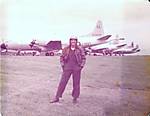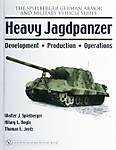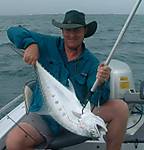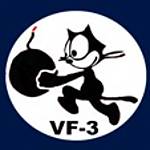Quoted Text
I think that the P-51A after some research does not qualify.
The legend does not start until the B came along with that fantastic Merlin engine.
So it should be only the Merlin engined P-51 in the Big Three. I have several Bf109's
Bob
Hi, Bob & Friends!

Not to be a "contrary" kind of an individual, but let me just mention this:
If the RAF hadn't been so impressed with the British version of the Allison-engined P-51 and P-51A, i.e the Mustang Mk.I and Mk.Ia to begin with, there would NEVER have been a Merlin-engined Mustang... Let me stress that it was the RAF and the British Armaments Commission which first approached North American Aviation with a request to build Fighter Aircraft for Great Britain during the "Blitz Crisis" of 1940-'41. We have the RAF to thank for their foresight in bringing this fine aircraft up to her "full potential" when they first installed a Merlin in a Mustang Mk.I air-frame. In the meantime, the British authorities and the RAF also arranged with the US auto-maker, Packard, to build Rolls-Royce Merlins for the RAF, under license. With the license-built Packard/Rolls-Royce Merlin Aircraft Engines being built in the United States, this took a tremendous strain off British Industry, much to the benefit of Great Britain and her Allies. The Merlin being squeezed into a Mustang Mk.I/P-51 air-frame ALMOST NEVER HAPPENED, if a few enthusiastic RAF Officers and Technicians hadn't recognized the potential of the Mustang and the Merlin, combined...
Let me also mention that the A-36A Dive Bomber version, the P-51, the P-51A and the F-6A Photo-Recon version, all of which still used the Allison Engine, all performed well enough for USAAF service in the various Theatres of Operations which I've already put forward in a previous post in this thread.
All of these early P-51/A-36/F-6 types performed yeoman-service at low-to-medium altitudes, and were superior in performance to the P-39/P-400 and P-40, which "held the line" in the South Pacific, China, Africa, the Mediterranean, Burma, Australia and New Zealand, until better Allied Aircraft could be made available.
I'm surprised no one mentioned the P-39/P-400 and the P-40, prior to my bringing them up in this conversation...

VR, Dennis

PS-
As to Bf.109s, if one wants to "split-hairs" over P-51s, P-51As, A-36As, Mustang Mk.Is and Mk.Ias, then I can also point out that the really "legendary" '109s didn't come about until the advent of the "Gustav"-models. Actually, I don't really feel that my prior statement would be true, as the Spitfire Mk.I/Mk.II was a contemporary of, and a near-equal, pound for pound, of the Bf.109E-series... (I'd prefer the Spit, hands down...)

Personally-speaking, the Bf.109 was a COMPLETE DEPARTURE from the "fabric and wood" string-bag kites of the "WWI and inter-war era". The "Hurri" was sort of a hold-over, but she gave much credit where credit was due to Sidney Camm's excellent original design, when most Aviators of the 1930s were loath to accept the monoplane and retractable Landing Gear...
The Bf.109 required Wing Slats in order to keep it in the air while executing tight, turning maneuvers, something that contemporary fighters of the '109 didn't need in order to stay aloft. Ask any Mitsubishi A6M Pilot about maneuver... By comparison, Japanese A6M Pilots felt that the Bf.109 "flew like a truck"... ("Lorry" for our British and Commonwealth Friends)









































